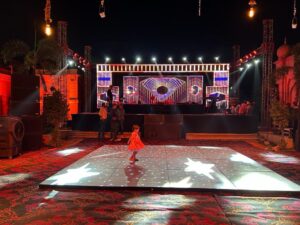The Golden Temple, also known as Harmandir Sahib, stands not only as a central religious place of the Sikhs but also as a symbol of human brotherhood and equality. The temple is a beacon of strength and beauty, located in Amritsar, Punjab, India, attracting millions of visitors from around the world. This article delves into the unique architectural features, symbolism, and exquisite craftsmanship of the Golden Temple, showcasing why it is not just a place of worship but a masterpiece of Indian architecture.
Historical Context of the Golden Temple
Before diving into the architectural nuances, it’s essential to understand the historical backdrop. Founded in 1577 by the fourth Sikh guru, Guru Ram Das, the Golden Temple was completed by his successor Guru Arjan Dev. The temple was designed to be a place of inclusivity and openness, which is reflected in its distinct features.
Architectural Layout and Design

The Strategic Placement
The Golden Temple is strategically placed lower than its surroundings, which is uncommon for a place of worship. This placement symbolizes humility and urges visitors to descend steps to reach it, representing the submission to the divine.
The Sarovar
Surrounding the temple is the Sarovar, a large holy water tank, which not only adds to the aesthetic beauty but also holds spiritual significance. Devotees partake in a ritual dip here, believing in its purifying properties.
The Causeway
The temple is accessible through a narrow causeway, which symbolizes the journey of the soul towards the divine. This path, surrounded by the reflective waters of the Sarovar, encourages introspection and spiritual connection.
The Unique Structure of the Harmandir Sahib

The Sanctum Sanctorum
At the heart of the Golden Temple is the Sanctum Sanctorum, entirely covered in gold. This central shrine houses the Adi Granth, the holy scripture of Sikhism, and is a stunning example of Sikh architecture.
The Four Doors
Unique to the Golden Temple is its four doors, each facing a cardinal direction. This design invites people from every walk of life and every religion, emphasizing the Sikh principle of acceptance and openness.
Symbolism Embedded in Architecture

The Golden Facade
The gold coating on the temple not only gives it its name and breathtaking shimmer but also symbolizes enlightenment and purity. Gold, an imperishable metal, is indicative of the timeless nature of spiritual truth.
The Marble Base
Beneath the gold panels, the temple’s foundation is made of white marble, embellished with pietra dura (inlay work). The white marble represents purity and the inlay work, intricate and meticulous, showcases stories from various spiritual texts, adding layers of meaning.
Craftsmanship of the Golden Temple
Pietra Dura Artwork
The walls of the Golden Temple feature pietra dura, a decorative art involving inlaid, colored stones creating images and patterns. This technique, which reached its peak during the Mughal era, is evidence of the skilled artisans who contributed to the temple’s beauty.
Woodwork and Frescoes
Inside, the temple boasts detailed wood carvings and exquisite frescoes. These artworks not only beautify the space but also narrate stories from Sikh history, adding a dimension of storytelling through art.
Modern Additions and Renovations
The Golden Restoration
Over the centuries, the Golden Temple has undergone several renovations, especially after suffering damages during various historical conflicts. The most significant modern addition was the reapplication of the gold leafing in the early 19th century, which was donated by Maharaja Ranjit Singh, the leader of the Sikh Empire.
The Information Center
To cater to the global visitors, the temple complex now includes an Information Center, which helps educate visitors about the temple’s history, significance, and the tenets of Sikhism.
Environmental and Sustainable Practices
In recent years, the management of the Golden Temple has implemented several sustainable practices to preserve the natural and built environment. This includes solar panels for energy and efforts to keep the Sarovar clean, reflecting a commitment to environmental stewardship.
The Golden Temple in Cultural Context
The Golden Temple is not just an architectural marvel; it’s a vital cultural hub. The daily Langar (community kitchen), which feeds thousands of people regardless of background, caste, or creed, exemplifies the living ethos of Sikhism—selfless service and community harmony.
Conclusion
The Golden Temple of Amritsar is a splendid example of architectural brilliance, symbolic depth, and craftsmanship. Each detail of the temple from the gold-clad exterior to the marble inlays narrates a story of devotion, inclusivity, and beauty. It stands as a monument not only of great religious significance but also as a testament to the artistry and spirit of the Sikh community. Visiting the Golden Temple is a profound experience, illuminating the human spirit’s capacity for tolerance, respect, and profound devotion. With its deep cultural significance and stunning visual appeal, the Golden Temple rightly holds a place as one of the most revered and visited sites in the world.
Explore The Earth Amritsar a heritage hotel in Amritsar while discovering the cultural gems of the Amritsar.



